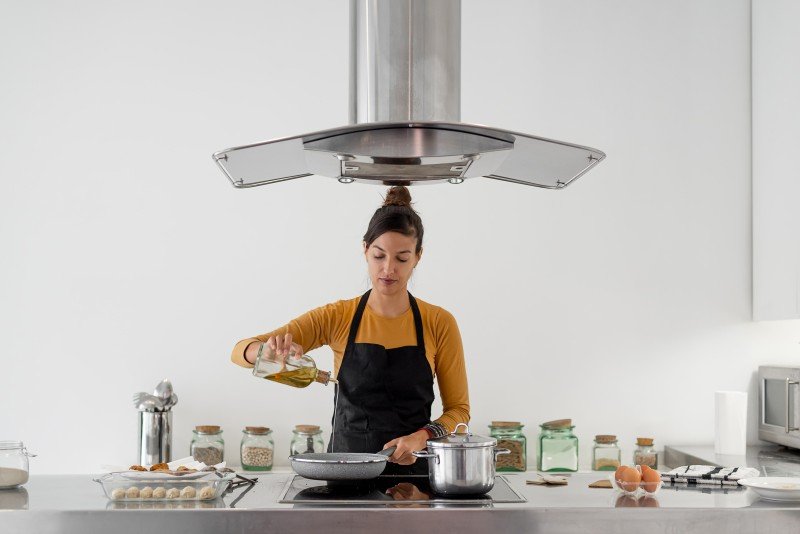How To Resolve Issues With Hobs And Ovens
Understanding Hobs and Ovens: A Comprehensive Guide for Cooking Enthusiasts
The kitchen is frequently considered the heart of the home, where cooking productions come to life. Two essential elements of any kitchen are the hob and the oven. While they are both vital for cooking and cooking, many property owners may not fully understand the differences, functionalities, and various types available in the market today. In this article, we will explore these devices in detail, assisting you make informed choices for your culinary requirements.
Table of Contents
- What is a Hob?
- 1.1 Types of Hobs
- 1.2 Benefits of Different Hob Types
- What is an Oven?
- 2.1 Types of Ovens
- 2.2 Benefits of Different Oven Types
- Picking the Right Hob and Oven for Your Kitchen
- Frequently Asked Questions (FAQs)
- Conclusion
What is a Hob?
A hob, typically understood as a cooktop, is a cooking surface area that you put pots and pans on to prepare food. It includes a series of heating elements and is regularly set up on countertops. In modern kitchen areas, hobs can be found in various styles, innovations, and performances.
1.1 Types of Hobs
There are several types of hobs readily available in the market:
Type
Description
Gas Hob
Uses gas burners for cooking, offering accurate temperature level control.
Electric Hob
Runs utilizing electrical heating elements, frequently seen in strong or radiant kinds.
Induction Hob
Uses electromagnetic fields to heat pots and pans straight, promoting energy performance.
Ceramic Hob
Functions a smooth glass top, using electric coils underneath the surface.
Solid Plate Hob
Conventional electric hobs with exposed metal plates that warm up.
1.2 Benefits of Different Hob Types
Gas Hobs:
- Quick heating & cooling.
- Visual flame control for precise cooking.
Electric Hobs:
- Even heating; perfect for simmering and boiling.
- Easy to clean, especially flat surface areas.
Induction Hobs:
- Energy-efficient as only the pot warms up.
- Safety functions, such as automated shut-off.
Ceramic Hobs:
- Attractive visual appeals with a smooth finish.
- Even surface areas for easy cleaning.
Strong Plate Hobs:
- Cost-effective and resilient.
- Great for basic cooking needs.
What is an Oven?
An oven is a kitchen home appliance utilized for baking, roasting, and broiling food. Ovens can be standalone units or built into kitchen cabinetry, supplying various cooking approaches that can boost or transform components.
2.1 Types of Ovens
Similar to hobs, there are several types of ovens, each with its benefits:
Type
Description
Traditional Oven
Operates with heating components, best for baking.
Stove
Utilizes fans to circulate hot air, cooking food equally and rapidly.
Microwave Oven
Cooks food using electro-magnetic radiation; ideal for reheating.
Steam Oven
Utilizes steam to prepare food, preserving wetness and nutrients.
Wall Oven
Built into the wall, providing convenience and aesthetic appeal.
2.2 Benefits of Different Oven Types
Traditional Ovens:
- Simple to utilize without any complicated settings.
- Versatile for numerous cooking techniques.
Convection Ovens:
- Faster cooking times due to air flow.
- Enhanced browning and crisping for baked goods.
Microwave Ovens:
- Quick cooking or reheating of food.
- Energy-efficient for low-volume cooking.
Steam Ovens:
- Health-conscious cooking that retains nutrients.
- Excellent for baking bread and cooking vegetables.
Wall Ovens:
- Convenient positioning; conserves space.
- Less flexing required to gain access to cooking dishes.
Picking the Right Hob and Oven for Your Kitchen
When picking a hob and oven, elements such as area, cooking design, and personal choices need to be thought about. Here's a basic guide to help you select:
Factors to Consider
- Cooking Needs: Evaluate your cooking routines. Do you often bake, or is stovetop cooking more prevalent?
- Space Availability: Measure your readily available kitchen area. pop over to these guys or ovens might need more room than others.
- Fuel Type: Decide in between gas and electric, based on availability and individual choices.
- Spending plan: Determine what you're prepared to invest and discover options within that variety.
Quick Tips
- Prioritize Efficiency: Look for energy-efficient designs to minimize long-term expenses.
- Read Reviews: Explore user reviews to collect viewpoints on efficiency and reliability.
- Speak with Professionals: Seek advice from kitchen style experts when preparing your design.
Often Asked Questions (FAQs)
1. What is the distinction in between a hob and an oven?
A hob is a cooking surface normally for stovetop cooking, while an oven is an enclosed space utilized for baking, roasting, and broiling food.
2. Can I utilize any pot on an induction hob?
No, induction hobs need magnetic cookware. Stainless steel and cast iron pots work, but non-magnetic products like aluminum won't.
3. How do convection ovens vary from standard ovens?
Stove employ fans to distribute hot air for even cooking, whereas standard ovens do not have this function.
4. Is it possible to have both a hob and oven as a single unit?
Yes, there are variety cookers that integrate a hob and an oven within one home appliance, providing an extensive cooking service.
5. How do I clean my hob and oven?
A lot of hobs and ovens have recommended cleaning methods depending upon their materials. It is a good idea to seek advice from the producer's directions for the best practices.
Understanding the differences in between hobs and ovens is important for anyone seeking to optimize their kitchen area or enhance their cooking abilities. By knowing the different types, their benefits, and how to pick the ideal ones for your needs, cooking can end up being a more satisfying and efficient experience. Whether you are a skilled chef or a novice cook, the ideal mix of hob and oven can elevate your culinary developments to brand-new heights.
